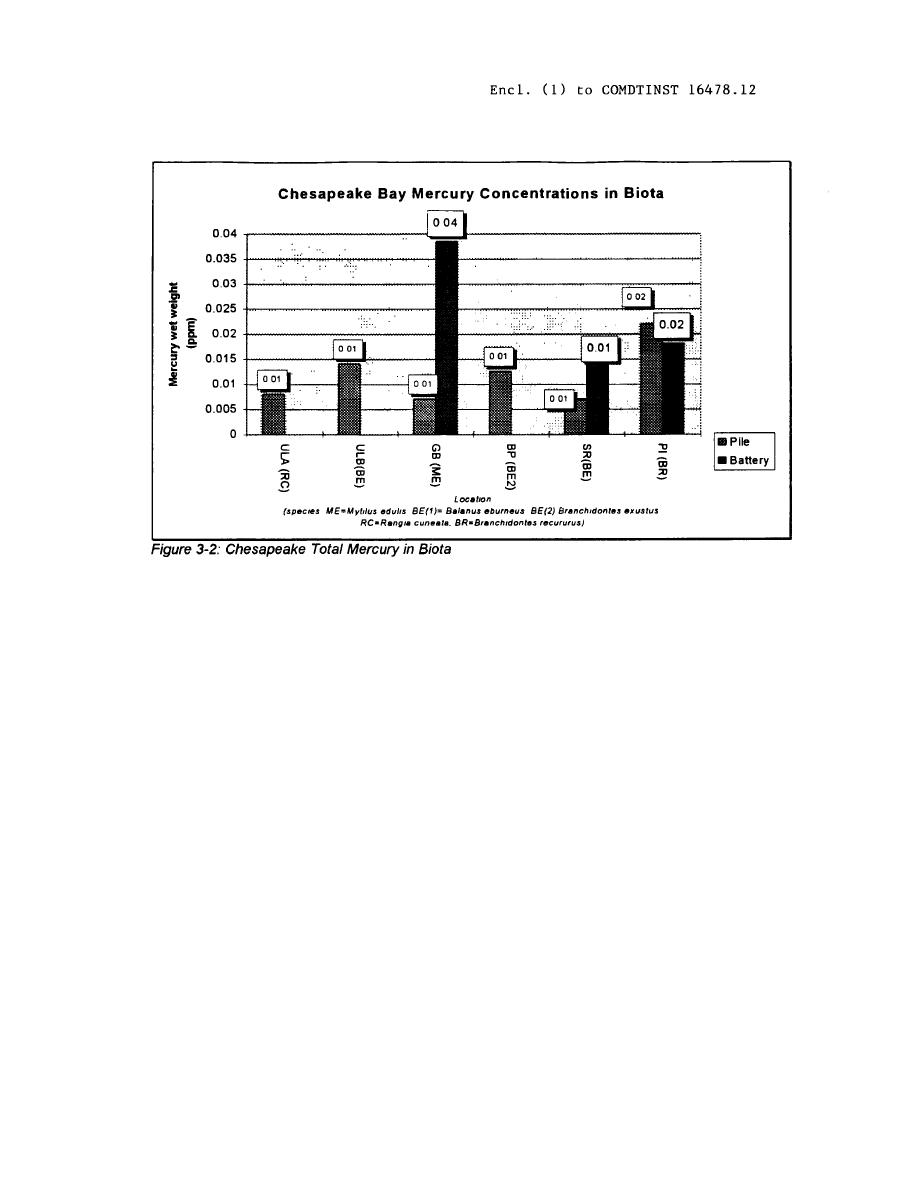
There was a strong correlation between concentration of mercury and physical
characteristics of the sediment seen at the Chesapeake Bay AtoNs (r of 0.72)
(CH2M Hill 1993b). In areas were there were fine grain sediments and abundant
organic matter the concentrations were higher than in areas with larger grain
size material such as sand. This correlation held whether there were
batteries present or not.
The Pooles Island Light examined as part of the Chesapeake Prototype
investigation exhibited a combination of characteristics which would result in
environmental risk. The habitat around Pooles Island Light is abundant with
fish, crabs, and other marine organisms which could accumulate mercury.
Discarding batteries onto the rip rap (e.g. large rocks used to inhibit
erosion) at the base of the light could result in a large number of broken
batteries, and the oyster bar substrate could prevent mixing of the mercury
from the batteries into the sediment. The result could be relatively high
concentrations of mercury at the sediment interface.
Due to species abundance at the locations studied in Chesapeake Bay,
biological samples of the same species could be collected within an AtoN site
and among different AtoNs. The concentrations of mercury in biota at the
AtoNs were generally at or below background levels, and well beneath the
levels associated with risk in humans (CH2M Hill, 1993a).
3-2




 Previous Page
Previous Page
